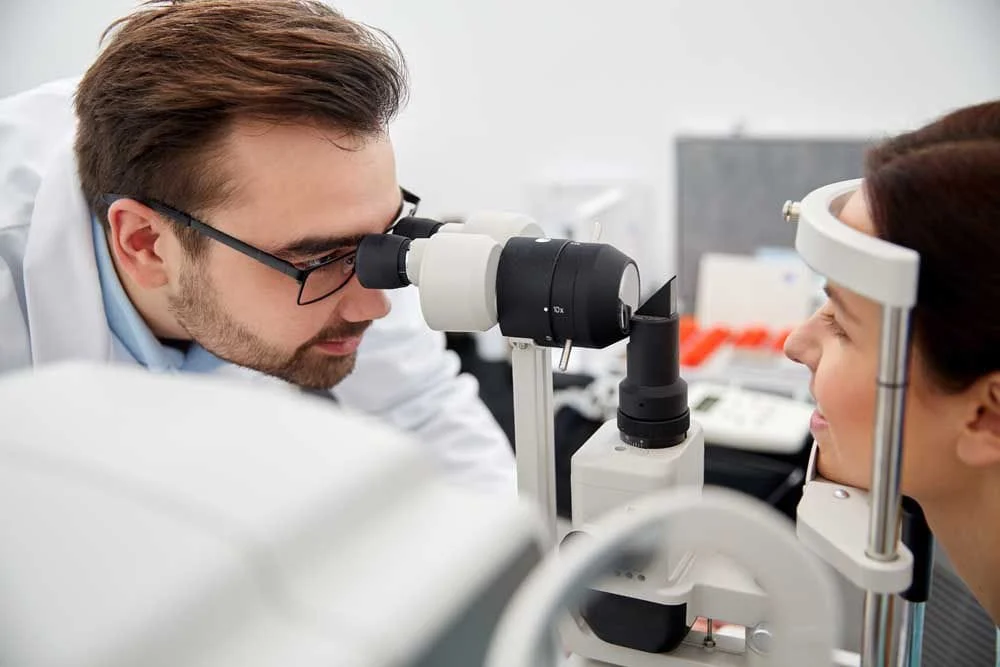At Eye 1st Vision Center, we care about you and your vision. Our Sandy Springs, GA optometry team specializes in the diagnosis, management, and treatment of eye disease. One of those diseases is keratoconus. For your convenience, we compiled this list of frequently asked questions and answers regarding keratoconus.
1. What Is Keratoconus?
Keratoconus affects the clear surface (cornea) of the eye, causing it to thin and weaken. Once damaged, the shape of the cornea becomes more conical and less rounded. The altered form changes the way light refracts as it enters the eye. The onset of this disease usually begins during a person’s teen years.
2. What Are the Symptoms of Keratoconus?
Blurry vision, sensitivity to light, and seeing halos at night are all symptoms of keratoconus. Keratoconus may affect one’s ability to read or drive. Additional symptoms include seeing “ghost-like” images or streaking of lights. Any vision change is an excellent reason to schedule an appointment with an eye doctor.
3. What Causes Keratoconus?
Many people with keratoconus have a parent who also developed the condition. Chronic eye rubbing can also lead to keratoconus, as well as eye allergies. Certain groups of people are known to develop keratoconus. Between five and fifteen percent of people who have Down Syndrome also develop keratoconus. People with connective tissue disorders are more susceptible to keratoconus. People with special needs may not communicate a change in eyesight, so it is crucial to have their eyes examined annually.
4. How Does an Eye Doctor Diagnose Keratoconus?
To check for keratoconus, an eye doctor will measure the contours of each cornea. The most common way to measure the cornea is using topography. An optometrist uses a machine to create a colored topography map of a person’s cornea. The measuring process is painless. Although keratoconus usually affects both eyes, the progression in each eye may be very different.
5. What Is the Best Treatment for Keratoconus?
There is no one single best treatment method. Treatment depends on several factors, including the severity of an individual’s keratoconus. We treat mild cases with glasses or contact lenses. If a person’s keratoconus is moderate, one of our optometrists can prescribe special contact lenses or scleral lenses. In severe cases, our eye doctor can insert corneal rings. The final option is undergoing a corneal transplant.
6. What Should I Do if I Think I Have Keratoconus?
If you think there is a chance you or your teenager has keratoconus, contact us at Eye 1st Vision Clinic in Sandy Springs, GA, today. Call us at 404-800-3705 to schedule an appointment with an optometrist. Let us diagnose your eye problem before it becomes severe.

